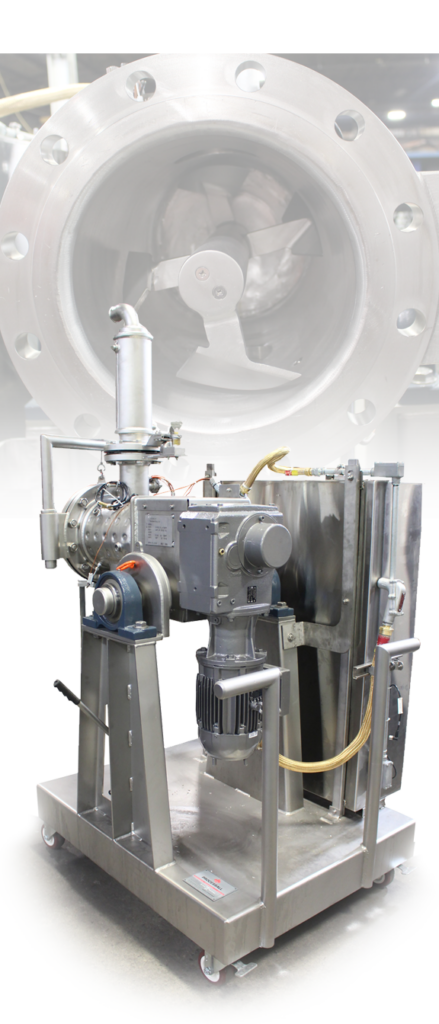
Plastisols & Organisols
Plastisols are typically used as a protective coating in the automotive industry
(for rust protection), toys, boots, appliances, gloves, fabric
coating, sheeting, foam and many other applications
Plasticols
Numerous manufacturing techniques utilize plastisols, including utensil coating as well as slush, rotational, and dip molding. Selecting the proper plastisol components – plasticizer(s), stabilizer(s), filler(s) and thixotropic agent(s) are important when deciding the optimum formulation. Mixing of these materials under proper conditions is equally important to producing high quality products.
To formulate a plastisol, it is necessary to create a colloidal suspension of extremely fine PVC powders in
a medium viscosity plasticizer. Complete solvation of all particles is required to assure uniform and reproducible viscosity necessary for the production of material.
Traditionally, plastisols have been produced utilizing top entering liquid agitators, low intensity ribbon, paddle, planetary and conical blenders. However, these machines have disadvantages such as a longer mixing cycle, entrapment of air in the product, and considerable
heat build-up in thick pastes. Any of these negative features create downstream processing issues.
A plowshare mixer utilizes its mechanically fluidized bed mixing principle to eliminate these problems by achieving excellent dispersion in short mixing cycles. The mixing principle results in homogenous product with less heat build-up due to mechanical shear. Additionally, utilization of a cooling jacket on the mixer helps control product temperature, preventing any hot spots and undesirable gel formation in the product.
Plasticizer and pigments are charged to the static mixer. Co ld wateris circulated through the jacket while charging the mixer. The main mixing elements are activated and the resin addition is initiated.
Continuous addition of resin over a 3-5 minute period allows for better absorption by the plasticizer while mixing. Filler is then added slowly into the mix. After all ingredients are charged and mixed, the machine is sealed and air is removed with the aid of a vacuum pump, allowing the product to be deaerated while mixing. This stage of the cycle lasts approximately 5 minutes under 25”-27”Hg of vacuum. Upon completion, a homogenous resin blend has been created with entrapped air removed. The entire mixing and de-aeration cycle is less than 15 minutes. The final product is ready for application or aging if it is necessary.
These machines can be easily cleaned by utilizing water and detergent, then running the plows for a short period of time. The machine can then be wiped clean or air dried after the water and detergent is discharged.
Organicols
An organisol is similar to a plastisol but is modified by the addition of volatile solvents (dispersants) such as polar ketones. These are added to the resin, plasticizer, stabilizer and pigment at the beginning of the mix cycle. The diluents are non-polar solvents that adjust the flow properties and reduce the solvating effect of the dispersant. Diluents must be added after all the resin is solvated. Organisol is such a reactive component they can absorb about 1,000 times their own mass in gaseous and pollutant compounds.
Benefits of Organisol:
• Cost effective
• Environmental friendly
• Non-corrosive
• Non-pollutant
• Odor control
• Natural solution
